GREECE, THE LAND OF MEN AND GODS.
A single trip is not enough to visit the entire country. One has to choose: The Greek islands or the Greek mainland; the Greek beaches or the Greek monuments; Ancient Greece or Byzantine Greece; calm Greece or cosmopolitan Greece; And then one has to choose once more, amongst the islands… .
Peloponnesus which is linked to Attica by the Isthmus canal is a mountainous peninsula inland basin caused by subsidence and coastal plains. Argolis the eastern coastal plain produces cereals orchards and flowers. At the west coast extends the plain of Ellis. The main products here are cereal, orchards, and vineyards. Corinth in the East and Achaia on the West produce various similar goods.
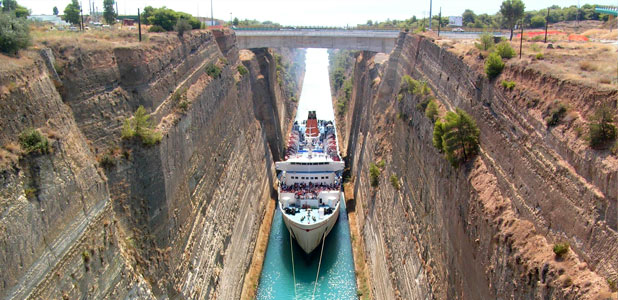
Only 76 kms W of Athens is the ancient city of Corinth. The ruins of the ancient city spread south of the Acrocorinthos. Long walls start from Acrocorinthos, surround the city and extend down to the sea.
Archaeological exhibits can be seen in the museum such as mosaics from the archaic period and pottery with geometrical designs from the same era.
Top

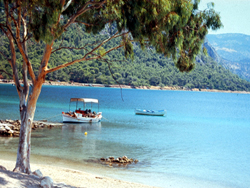
On the opposite side of Corinthian Gulf is the Spa town of Loutraki 86 kms from Athens.
Loutraki combines the old charm of a spa city and the modern attractions of a seaside resort night life and Casino. Overlooking Loutraki is the mount Gerania from where all warm mineral water which supplies the spas is coming from. The water is radioactive and is used for treatment of rheumatism and renal infections.
Top
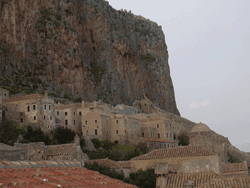

The old castle of Monemvassia is built on a 300-meter high rock off the east coast of the Peloponnese and is connected to the mainland through a bridge. The great greek poet Giannis Ritsos was born in Monemvassia.
Worth a Visit:
- Kastro: This forms the old and lower town
- Akropoli: The citadel which was built the 16 century AC is the ideal place to have a fine view of the lower town. - Agia Sofia: The principal church of the citadel built during the Byzantine rein.
Top
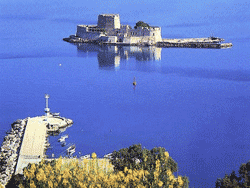
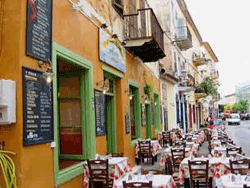
Nafplion is a seaport town that extends up the hillside of the northern side of the Argolic Gulf. The town was the first capital of modern Greece, from the start of the Greek Revolution in 1821 to 1834. Today, it is the capital of the prefecture of Argolis. This city of character with its Italian influence, its buildings from the Venetian period is lively and noisy.
To be Seen: The fort of Palamede the Archaeological museum and the museum of Popular Art.
Top
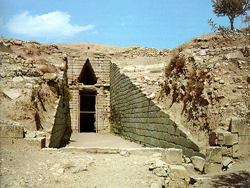
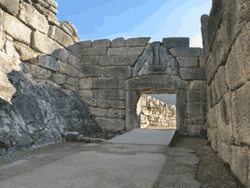
The remains of the most ancient site of the continental Greek Civilization. This settlement which dates from the second millennium BC played an important role in the development of the Greek Civilisation. Capital of the Atreids who played a major role in the Trojan War.
Worth visiting:
- The Lion Gate which was the main entrance to the acropolis.
- The Atrides palace dates from the 15C BC and consists of three blocks of buildings.
- The Atrea’s treasure this is the largest and most beautiful of the tombs discovered in the area.
- Clytemnestra’s Tomb was excavated in 1951 by Schliemann.
Top
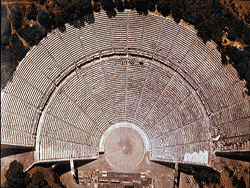
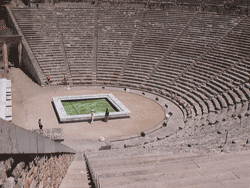
Famous for its theater and its festival of dramatic art .The acoustic of the theater is remarkable and has a capacity of 14000 spectators. It was also the sanctuary for Asclepius, the God of medicine and people from all over Greece came for consultation.
The Theater has the shape of a semicircle but is a bit bigger. It consists of 55 rows of seats which are divided in a lower and upper section. Asklipiio: Sanctuary of Asclepius.
Top

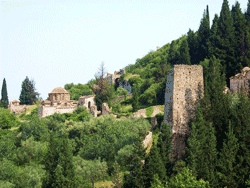
At a distance of 5 kms from Sparta, Mystras is located in the region of Laconia. This Byzantine city is built on the slope of a high hill dominated by the castle of Guillaume de Villehardouin. One can admire great monasteries dating back to the 14th and 15th centuries.
Top

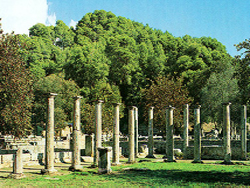
The town is best known for having been the site of the Olympic Games in classical times. Important archaeological remains can be seen, the temple of Zeus, the temple of Hera, the Stadium ,the largest Ancient stadium (30.000 spectators), the gymnasium ,the museum. During the 19th century, the marbles of the Great temple of Zeus were found in Olympia as well as other important ancient sculptures.
Top
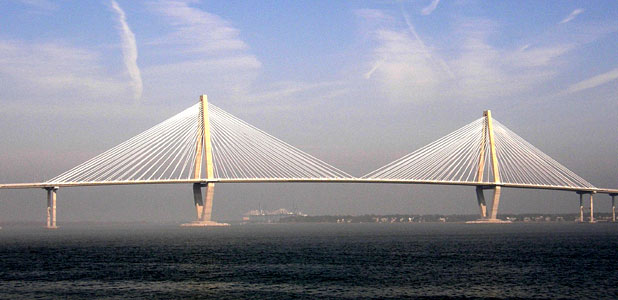
The capital of Peloponnesus is the third largest city in Greece. Patras is a major port in Greece and receives all the traffic arriving by sea from Italy. The town carnival on February is the most spectacular in Greece.
Worth Visiting
- Akropoli: In the 9thC the castle was rebuilt by the Byzantines and subsequently enlarged and improved by the French.
- Agios Andreas: (St. Andrew’s church) The Icons of St. Andrew and Virgin Mary are exhibited in the church as well as a gold gasket which contains the Saint’s head which was transported from Rome to Marseille in 1964 and then to Patras in 1980.
- Archeo Odio: The Roman Odeon dated 2C AD was discovered in 1889. In 1963, it was fully restored and nowadays it is used for cultural events.
- Archaeological Museum contains arms, sculpture, mosaics etc
- Ethnology and History museum containing items from 1821(Greek revolution) to 1913 (Balkan Wars).
Top
